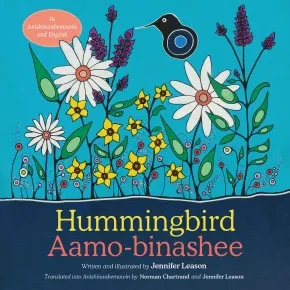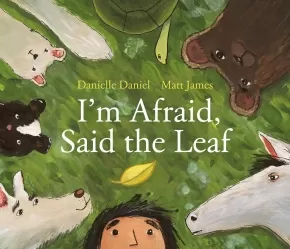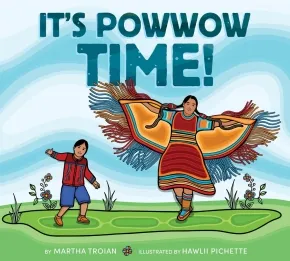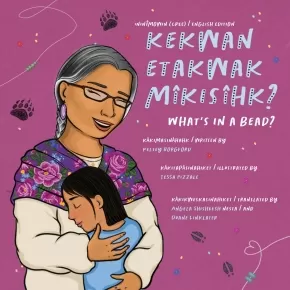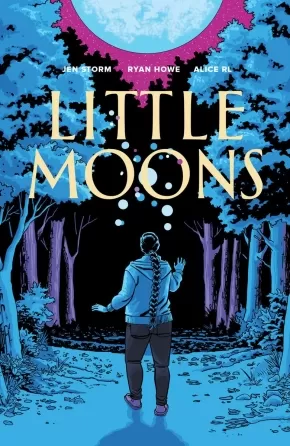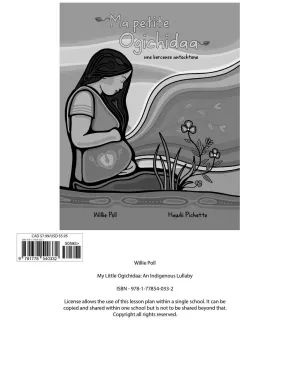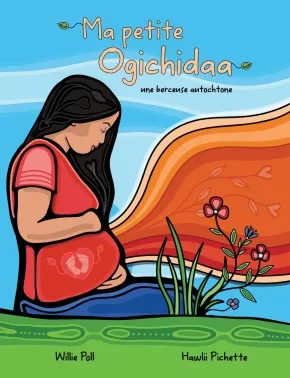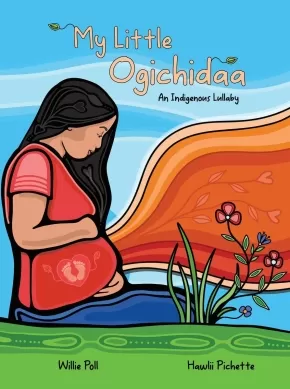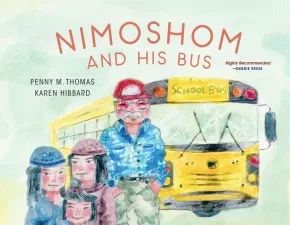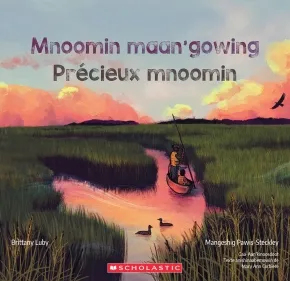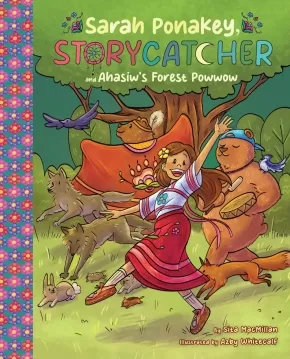
Anishinaabeg
61
-
75
of
235 Results;
Sort By
Go To
of 16
Hummingbird / Aamo-binashee
$21.95
Artists:
Format:
Hardcover
Text Content Territories:
Indigenous Canadian; First Nations; Anishinaabeg;
ISBN / Barcode: 9781459837140
Synopsis:
Synopsis:
You never walk alone.
Remember the hummingbird's teachings. Remember you are loved.
Kokum warned us to watch out for one another. If we weren't careful, Windigo would eat us. But one night, alone in the darkness, I felt its breath on my neck. Windigo's lies crept into my heart, and I believed them. When we lose connection with others, we lose ourselves, and Windigo's darkness grows and spreads.
In this deeply emotional and beautifully illustrated picture book, the ancestors send a hummingbird to a child lost in Windigo’s darkness. Its teachings of resilience, love and connection bring the child home and remind us that our ancestors are always watching and can help us find our way if we only ask.
This bilingual book includes full text in both English and Anishinaabemowin.
Educator Information
Recommended for ages 6 to 8.
Fountas & Pinnell Text Level Gradient: U
Lexile measure: 520L
Guided Reading Level: U
Dual-Language: English and Anishinaabemowin
There are many dialects fo Anishinaabemowin, and this book presents a phonetic spelling of the language as learned by the author and co-translator in Duck Bay, northeastern Manitoba. This dialect is sometimes referred to as Western Ojibwa, Nakawemowin, Saulteaux or Plains Ojibwa. Translated by Norman Chartrand and Jennifer Leason.
This beautifully illustrated story expresses hope, healing and reclamation of Indigenous strength and identity in the wake of oppression and trauma.
Additional Information
32 pages | 8.00" x 8.00" | Hardcover
I'm Afraid, Said the Leaf
$24.99
Artists:
Format:
Hardcover
ISBN / Barcode: 9781774880708
Synopsis:
Synopsis:
A touching, playful exploration of empathy and interdependency from an acclaimed author and illustrator.
I’m afraid, Said the leaf. / You’re not alone, Said the tree. But who will comfort a nervous bird, a lonely crab, a lost wolf? How can a horse find warmth, a snail some cheer, a child some rest? Through a series of amusing and soothing exchanges, this deceptively simple and profound picture book depicts different pairings to celebrate interconnectedness and underlines the importance of caring for every living organism to ensure a strong and healthy natural world.
I’m Afraid, Said the Leaf invites young readers to understand that we all need each other for support and survival — and that we're all stronger together.
Reviews
"Every worry is addressed and every need is met in this eloquent portrait of the interconnectedness of the living world." —STARRED REVIEW, Publishers Weekly
"[T]he art renders the tale truly universal." —Kirkus Reviews
"[A] good picture book about kindness and how all species are interconnected and depend on each other "to exist and thrive in harmony."" —Metroland
Educator Information
Recommended for ages 3 to 7.
Additional Information
64 pages | 10.88" x 9.31" | Hardcover
Indiginerds: Tales from Modern Indigenous Life
$30.50
Artists:
Format:
Paperback
Text Content Territories:
Indigenous Canadian;
ISBN / Barcode: 9781638991335
Synopsis:
Synopsis:
First Nations culture is living, vibrant, and evolving, and generations of Indigenous kids have grown up with pop culture creeping inexorably into our lives. From gaming to social media, pirate radio to garage bands, Star Trek to D&D, and missed connections at the pow wow, Indigenous culture is so much more than how it’s usually portrayed. Indiginerds is here to celebrate those stories!
Featuring an all-Indigenous creative team, Indiginerds is an exhilarating anthology collecting 11 stories about Indigenous people balancing traditional ways of knowing with modern pop culture. Includes work by Alina Pete, PJ Underwood, Kameron White, Rhael McGregory, and many more.
Educator Information
Recommended for ages 12 to 18.
Full Creator Listing: Tate Allen, Ida Aronson, Jordanna George, Raven John, Nipinet Landsem, Rhael McGregor, Sam “Mushki” Medlock, Alina Pete, Wren Rios, PJ Underwood, Kameron White
Additional Information
120 pages | 6.62" x 10.25" | Paperback
It's Powwow Time!
$24.99
Artists:
Format:
Hardcover
Text Content Territories:
Indigenous Canadian; First Nations;
ISBN / Barcode: 9780063116665
Synopsis:
Synopsis:
This lyrical and joyful picture book celebrates new experiences and community traditions when a young boy learns to dance at his first powwow. It’s Powwow Time! is for readers of Cynthia Leitich Smith’s Jingle Dancer and Oge Mora’s Thank You, Omu!
Bineshii is looking forward to his first powwow. He wakes up and travels with his mother to the community event. He eats bannock and drinks strawberry juice as he watches the dancers perform. And ever so slowly, Bineshii works his way from the edge of the circle watching the dancers to inside the circle itself, dancing and celebrating with everyone else.
Award-winning journalist Martha Troian’s child-centered text and Hawlii Pichette’s action-packed illustrations build excitement on the page as Bineshii’s curiosity and confidence grows. It’s Powwow Time! explores the rewards of being open to new experiences while also serving as a beautiful and informative introduction to a First Nations powwow.
Educator Information
Recommended for ages 4 to 8.
Keywords/Themes: Early Years (Body and the Senses); Powwows; Self-Esteem; Dance; New Experiences.
This book is a wonderful read-aloud.
Includes an author's note about powwows.
Additional Information
32 pages | 10.00" x 9.00"
kekwan etakwak mîkisîhk / What’s in a Bead?
$21.95
Artists:
Format:
Hardcover
Text Content Territories:
Indigenous Canadian; First Nations; Anishinaabeg; Cree (Nehiyawak);
ISBN / Barcode: 9781772603675
Synopsis:
Synopsis:
There are many stories in a bead. We must listen to the stories they tell us.
Tessa loves how her grandmother always smells of campfire stories. Mom says it’s because Kohkom spends her days sewing beautiful beads onto smoked hides. Inspired, Tessa asks Kohkom to teach her beading, but first she must listen and learn about the many stories held in a bead.
A celebration of Cree craftsmanship, language, and learning. The loving exchange of knowledge between Tessa and her Kohkom will be familiar to many children. Readers will learn that different Indigenous communities have different beadwork techniques, and that this traditional art form is alive and thriving today.
Reviews
"The story is a beautiful look into the importance of beading in our communities and the ways that this art practice ties us together as families and communities." — Nancy Cooper, First Nations Consultant for the Southern Ontario Library Services and coordinator for First Nation Communities Read
Educator Information
Recommended for ages 6 to 8.
This dual language edition contains the story in both Ininîmowin (Cree, N-dialect) and English.
Translators: Duane Linklater & Angela Shisheesh
Duane is Omaskêko Ininiwak and currently lives in North Bay, Ontario. He earned a Master of Fine Arts from Bard College and a Bachelor of Native Studies with a focus in Cree language from the University of Alberta. Linklater is lifelong learner of the Cree language and credits the many Elders, including his kohkom Agnes Hunter, for teaching and sharing the language.
Angela is a Cree translator at Ojibway & Cree Cultural Centre based in Timmins, Ontario
An English-only version is available: What's in a Bead?
Additional Information
24 pages | 8.50" x 8.50" | Hardcover
Little Moons
$22.95
Artists:
Format:
Paperback
Text Content Territories:
Indigenous Canadian; First Nations; Anishinaabeg; Ojibway;
ISBN / Barcode: 9781774921074
Synopsis:
Synopsis:
In this moving graphic novel, thirteen-year-old Reanna grieves the loss of her older sister. Can she find comfort through her family’s Ojibwe traditions?
It’s been a year since Reanna’s sister, Chelsea, went missing on her way home from school. Without any idea of what happened, Reanna and her family struggle to find closure.
Driven from their home by memories, Reanna’s mom moves to the big city. Left behind on the reserve, Reanna and her little brother go to live with their dad.
Reanna is hurt and angry that her mom has run away. She feels lonely, abandoned… but she is not alone. Lights turn on in empty rooms, and objects move without being touched.
There are little moons everywhere.
Reviews
"Little Moons has all the hallmarks of becoming a cherished companion for young hearts navigating the turbulent waters of grief and loss. This graphic novel not only offers solace but also illuminates the path toward healing. Little Moons gently guides readers through the darkest of nights, reminding them that even in moments of profound sadness, there is still light to be found."—Tasha Spillett, New York Times bestselling author
Educator Information
Recommended for ages 12 to 18.
Subjects, Themes, and Big Ideas: Death, Grief, Siblings, Paranormal, Graphic Novels, Socail Justice, MMIWG2S, Prejudice and Racism, Social Emotional Learning, Aspects of Indigenous Cultures, Smudging, Powwow, Spirituality and Ceremony, Regalia, Traditional Art, Contemporary Setting, Strong Female Characters.
Fountas & Pinnell Z+
Additional Information
64 pages | 6.50" x 10.00" | Paperback
Ma petite Ogichidaa Plan de cours
$7.99
Text Content Territories:
Indigenous Canadian; First Nations; Anishinaabeg;
ISBN / Barcode: 9781778540486
Synopsis:
Synopsis:
Un plan de lecon de l'enseignant pour approfondir le livre, Ma petite Ogichidaa. Peut inclure des questions de compréhension, des activités de groupe, des amorces de conversation, des quiz, des activités d’arts du langage et des pages à colorier. L’histoire Ma petite Ogichidaa est inspirée par la maternité autochtone. Elle nous invite à découvrir les rêves et les espoirs fascinants d’une mère autochtone pour sa petite guerrière qui naîtra bientôt. Le mot Ogichidaa signifie guerrier/guerrière en anishinaabemowin et ce livre magnifiquement illustré rend hommage à toutes les familles autochtones qui élèvent fièrement leurs enfants pour qu’ils perpétuent leur culture, leur langue et leur amour avec résilience, force et gentillesse. Cette histoire réconfortante et inspirante célèbre l’amour autochtone et le puissant héritage qu’il crée.
Educator Information
Recommended for use with ages 7 to 10.
Find the student resource here: Ma petite Ogichidaa: une berceuse autochtone
This lesson plan is available in English: My Little Ogichidaa Teacher Lesson Plan
Additional Information
15 pages | 6.31" x 5.93" | Paper Packet
Ma petite Ogichidaa: une berceuse autochtone
$19.99
Artists:
Format:
Hardcover
Text Content Territories:
Indigenous Canadian; First Nations; Anishinaabeg;
ISBN / Barcode: 9781778540479
Synopsis:
Synopsis:
L’histoire Ma petite Ogichidaa est inspirée par la maternité autochtone. Elle nous invite à découvrir les rêves et les espoirs fascinants d’une mère autochtone pour sa petite guerrière qui naîtra bientôt. Le mot Ogichidaa signifie guerrier/guerrière en anishinaabemowin et ce livre magnifiquement illustré rend hommage à toutes les familles autochtones qui élèvent fièrement leurs enfants pour qu’ils perpétuent leur culture, leur langue et leur amour avec résilience, force et gentillesse. Cette histoire réconfortante et inspirante célèbre l’amour autochtone et le puissant héritage qu’il crée.
Educator Information
Recommended for ages 7 to 10.
This book is available in English: My Little Ogichidaa: An Indigenous Lullaby
Find a lesson plan for this book here: Ma petite Ogichidaa Plan de cours
Additional Information
32 pages | 8.43" x 11.22" | Hardcover
My Little Ogichidaa: An Indigenous Lullaby
$19.99
Artists:
Format:
Hardcover
Text Content Territories:
Indigenous Canadian; First Nations; Anishinaabeg;
ISBN / Barcode: 9781778540301
Synopsis:
Synopsis:
My Little Ogichidaa is inspired by Indigenous motherhood. It invites readers to explore the compelling dreams and hopes of an Indigenous parent for her soon-to-be-born warrior.
The word Ogichidaa itself means warrior in Anishinaabemowin, and this beautifully illustrated book is a tribute to Indigenous families everywhere who are proudly raising their children to carry forward their culture, language, and love with resilience, strength, and kindness. This story is proof that despite colonization, our world is full of Indigenous art, beauty, love, and brilliance. Through the eyes of a mother, readers gain insight into the profound bonds of family and community that are central to Indigenous life. This heartwarming and empowering story is a celebration of Indigenous love and the powerful legacy that it creates.
Educator Information
Recommended for ages 6 to 8.
Find a lesson plan for this book here: My Little Ogichidaa Teacher Lesson Plan
This book is available in French: Ma petite Ogichidaa: une berceuse autochtone
Recommended in the Indigenous Books for Schools catalogue as a valuable resource for English Language Arts and Social Studies, in Grades 2 to 4.
Themes: Ancestors, Decolonization, Resilience, Connectedness to Culture, Family
Additional Information
36 pages | 8.50" x 11.00" | Hardcover
Nimoshom and His Bus (PB)
$14.00
Artists:
Format:
Paperback
Text Content Territories:
Indigenous Canadian; First Nations; Cree (Nehiyawak);
Grade Levels: Preschool; Kindergarten;
ISBN / Barcode: 9781774921166
Synopsis:
Synopsis:
In this warm and joyful picture book highly recommended by Debbie Reese, children learn Cree from Nimoshom, their school bus driver.
Based on the author’s memories of her grandfather, Nimoshom is not your average bus driver. He loves to drive the school bus, tell silly stories, and share his language with the kids who ride his bus.
Nimoshom and His Bus introduces readers to common Cree words and phrases alongside the common childhood experience of riding the school bus. A Cree word list is included in the back of the book.
Reviews
"Through accessible language and engaging visual resources, readers are introduced to basic Cree as Nimoshom responds in this language to the children who ride his bus.... The illustrator’s varying the visuals between full double spreads and single page illustrations keeps the pacing lively. Amidst a rural fall setting, with woodland animals, children, and the school bus, Nimoshom’s humorous nature shines through these gentle illustrations. At the end of this story, you just want to give Nimoshom a great big hug!"— Anita Miettunen, CM: Canadian Review of Materials
"In this bilingual book, readers follow a bus driver picking up kids and dropping them off before and after school. Like the students on the bus, readers quickly learn that the driver's native language is Cree, and he often speaks to them in his native language. Readers learn that "Nimoshom" means "my grandfather" and that "Ekosani" means thank you" as the author (of Cree descent herself) weaves Cree words into the text, and each new spread almost feels like a gentle wave: yes, we're subtly learning new words, but it never feels strenuous or forced, rather it's calm and poetic."— Let's Talk Picture Books
"While Penny M. Thomas' story is not a plot-driven allegory or a message-based lesson, Nimoshom and His Bus is a sweet introduction to some simple Cree words in the context of a common-place activity for many children.... Karen Hibbard who uses watercolours and pastels to create a gentle background for Nimoshom's day on his bus gives the story a grassroots mood, highly appropriate for a routine day of activity and interaction for this bus driver and his charges. It's very relatable."— Helen Kubiw, CanLit for Little Canadians
"If you're a regular reader of AICL, you know that we're always delighted by books by Native writers--especially ones set in the present. Books like Nimoshom and His Bus provide Native children with mirrors that non-Native children find in abundance.... I highly recommend Nimoshom and His Bus! It'd be a simple thing to use other Native words in addition to--or instead of--the Cree words in the book."— Debbie Reese, American Indians in Children's Literature
Educator Information
Recommended for ages 3 to 5.
Additional Information
24 pages | 9.50" x 7.50" | Paperback
Précieux mnoomin
$14.99
Format:
Paperback
Text Content Territories:
Indigenous Canadian; First Nations; Anishinaabeg; Ojibway;
ISBN / Barcode: 9781039705241
Synopsis:
Synopsis:
Un enfant anishinaabe explore l’histoire d’une precieuse graine de mnoomin et le cercle de vie que le mnoomin entretient.
Redigee en anishinaabemowin et en francais, l’histoire se deroule au moment de la recolte. L’enfant tient une graine de mnoomin et imagine toute la vie qui a rendu possible une seule graine : l’ephemere, le brochet, le rat musque, l’aigle et l’orignal ont tous eu un role a jouer dans sa creation. Que se passera-t-il si la graine germe? Les feuilles immergees abriteront les jeunes poissons, les pousses protegeront les canetons, les tiges nourriront les larves, qui a leur tour fourniront de la nourriture aux chauves-souris... jusqu’a ce que le mnoomin soit a nouveau pret a etre recolte.
Cette histoire magnifiquement ecrite et illustree revele l’importance culturelle et ecologique du mnoomin.
Educator Information
Recommedned for ages 4 to 6.
Written in Anishinaabemowin and French.
This book is available in Anishinaabemowin and English: Mnoomin maan'gowing / The Gift of Mnoomin.
Additional Information
36 pages | 8.51" x 8.73" | Paperback
Sarah Ponakey, Storycatcher and Âhâsiw's Forest Powwow
$10.99
Artists:
Format:
Paperback
Text Content Territories:
Indigenous Canadian; First Nations; Cree (Nehiyawak);
ISBN / Barcode: 9781773218892
Synopsis:
Synopsis:
A vibrant debut early chapter book series celebrating Cree culture and being true to yourself.
Sarah Ponakey has moved to the city from her home community with her mom and it’s the pits! She misses her Kôhkom, her best friend Eden, and the forests around her community. She’s had a hard time making new friends at school but at least she keeps in touch with Eden through meticulously written letters with very big words. After a particularly tough day where she nearly loses her favorite stuffed animal, Âhâsiw, and is brushed off by her mom, Sarah finds herself transported to a magical forest powwow . . .
Accompanied by a life-sized Âhâsiw in his beautiful regalia, Sarah watches in excitement as a chipmunk emcees, and bears play the host drum at her first ever powwow. The more she sees, the more her confidence grows. As she joins in the celebration, Sarah discovers that she can connect to her Cree culture no matter where she is. Her Kôhkom’s going to love this story! Âhâsiw’s Forest Powwow, the first book from debut children’s author Sita MacMillan, features Cree words throughout the story and a note to the reader. Azby Whitecalf’s dynamic illustrations bring life to this warm, charming, and funny introduction to Sarah Ponakey, the storycatcher.
Educator & Series Information
Recommended for ages 6 to 9.
This is the first book in the Sarah Ponakey, Storycatcher series, a vibrant debut early chapter book series celebrating Cree culture and being true to yourself.
Additional Information
120 pages | 6.00" x 9.00" | Paperback
Sharing Circle and Talking Stick
$19.95
Artists:
Format:
Paperback
Text Content Territories:
Indigenous Canadian;
ISBN / Barcode: 9781990297724
Synopsis:
Synopsis:
This rhyming book helps children learn and understand the Sharing Circle and using a Talking Stick in a Sharing Circle.
Educator Information
The publisher recommends this work for grades 1 to 3.
Additional Information
Paperback
Sometimes I Feel Like an Oak
$19.99
Artists:
Format:
Hardcover
Text Content Territories:
Indigenous Canadian; First Nations; Anishinaabeg; Algonquin;
ISBN / Barcode: 9781773066981
Synopsis:
Synopsis:
Following the success of Sometimes I Feel Like a Fox and Sometimes I Feel Like a River, this companion book explores the nature and beauty of trees.
Twelve lyrical poems look at twelve different trees, from early spring to deep winter. In each poem, a child identifies with a feature of the tree - such as the smooth trunk of a birch whose bark has peeled away, the strong branches of a spruce that shelter small birds or the pink flowers of a cherry blossom that tumble like confetti. The poems provide an opportunity to learn about each tree, inspiring us to look afresh at the trees around us - whether in the schoolyard, neighborhood or park - and get to know them better.
Danielle Daniel's passion for trees is beautifully matched by Jackie Traverse's paintings, which bring each tree to life. In the pages following the poems, children are invited to consider what different kinds of trees might mean to them. In an author's note, Danielle Daniel shares her belief, similar to her Algonquin ancestors', that trees are sentient beings with much to give and teach us.
Educator & Series Information
Recommended for ages 3 to 6.
This book is part of the Sometimes I Feel Like series.
This book encourages a familiarity with, knowledge about, love of and respect for trees, providers of shade, beauty, oxygen, medicines, food and more.
The text and illustrations show twelve trees from spring through winter, making this a title that could support teaching science units on the seasons.
Key Text Features
illustrations
author's note
poems
Correlates to the Common Core States Standards in English Language Arts:
CCSS.ELA-LITERACY.RL.K.5
Recognize common types of texts (e.g., storybooks, poems).
CCSS.ELA-LITERACY.RL.K.6
With prompting and support, name the author and illustrator of a story and define the role of each in telling the story.
CCSS.ELA-LITERACY.RL.1.4
Identify words and phrases in stories or poems that suggest feelings or appeal to the senses.
Additional Information
32 pages | 8.25" x 10.00" | Hardcover
Stitches of Tradition (Gashkigwaaso Tradition)
$24.99
Format:
Hardcover
ISBN / Barcode: 9780063218680
Synopsis:
Synopsis:
“Noozhishenh, bimadiziwin,” Nookomis says. “My granddaughter, live a good life.”
An Ojibwe grandmother carefully measures and selects just the right colors of fabric, and her sewing machine hums whirr, whirr, whirr late into the night.
In the morning, her growing granddaughter has a beautiful new ribbon skirt to wear, a reminder of her nookomis and the cultural traditions that stitch together her family with love.
This heartwarming story by Marcie Rendon (Ojibwe), with stunning illustrations by Joshua Mangeshig Pawis-Steckley (Ojibwe), celebrates the power of Indigenous craft and community and weaves together the spirit of resilience, female empowerment, and gratitude for the generations that came before us.
Reviews
A radiant and joyful glimpse at an important Native tradition." — Kirkus Reviews (starred review)
"Tradition and love are the core of this picture book...Ojibwe language is seamlessly woven into the dialogue. The digital art fully saturates the pages, layering textures and colors much like the ribbon skirts, and the palette is buoyant and bright, exuding a celebratory feel." — Bulletin of the Center for Children’s Book"s
Educator Information
Recommended for ages 4 to 8.
Detailed text perfect for read-alouds.
Backmatter includes a glossary of Ojibwa terms, more information on ribbon skirts, including history and significance, and infromation about manoomin (wild rice).
Additional Information
40 pages | 8.50" x 11.00" | Hardcover
Sort By
Go To
of 16

